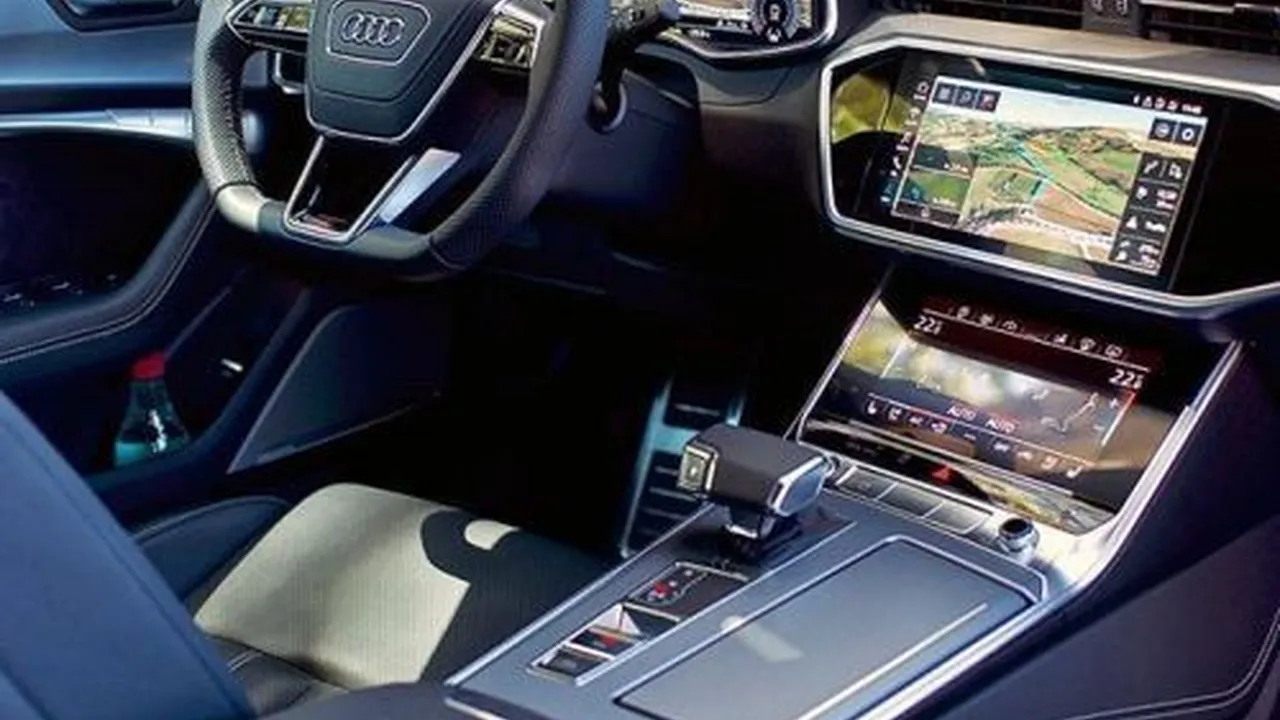Voice Control Systems for EVs: Hands-Free Operation
Meta Description: Discover the ultimate guide to noise cancellation technology for electric vehicles (EVs). Learn how noise cancellation works, its benefits, and explore top product recommendations for a quieter ride.

Understanding the Need for Noise Cancellation in Electric Vehicles
Electric vehicles are often touted for their quiet operation compared to traditional combustion engine cars. However, EVs aren't entirely silent. While they lack the roar of an engine, other noises become more noticeable, such as:
- Road Noise: The sound of tires rolling on the pavement, especially at higher speeds.
- Wind Noise: Air rushing around the vehicle's body.
- HVAC System Noise: The whirring of the air conditioning or heating system.
- Electric Motor Whine: A high-pitched sound that can sometimes be audible from the electric motor.
These noises can contribute to driver fatigue and a less enjoyable driving experience. Noise cancellation technology aims to mitigate these sounds, creating a more serene and comfortable cabin environment.
How Noise Cancellation Technology Works in EVs
Noise cancellation, also known as active noise control (ANC), employs a sophisticated system to counteract unwanted sounds. Here's a simplified breakdown of the process:
- Microphones: Multiple microphones are strategically placed inside the vehicle's cabin. These microphones constantly monitor the ambient noise levels.
- Digital Signal Processor (DSP): The signals from the microphones are fed into a DSP. This processor analyzes the incoming noise and identifies the frequencies and patterns of the unwanted sounds.
- Anti-Noise Wave Generation: The DSP then generates an "anti-noise" wave. This wave is an exact opposite of the unwanted sound wave, meaning its peaks and troughs are inverted.
- Speakers: The anti-noise wave is played through the vehicle's speakers.
- Cancellation: When the anti-noise wave meets the unwanted sound wave, they effectively cancel each other out, resulting in a reduction of the overall noise level.
There are two primary types of ANC used in EVs:
- Feedforward ANC: This system predicts the noise that will enter the cabin by using microphones placed outside the vehicle. It then generates the anti-noise wave in anticipation of the incoming sound.
- Feedback ANC: This system uses microphones inside the cabin to detect the noise that has already entered. It then generates the anti-noise wave to cancel out the existing sound.
Many modern EVs utilize a hybrid approach, combining both feedforward and feedback ANC for optimal noise reduction.
Benefits of Noise Cancellation in Electric Vehicles
Investing in noise cancellation technology for your EV offers numerous advantages:
- Reduced Driver Fatigue: A quieter cabin environment reduces mental strain and fatigue, especially on long drives.
- Improved Comfort: A more serene cabin enhances the overall driving experience, making it more comfortable and enjoyable for both the driver and passengers.
- Enhanced Audio Quality: With less background noise, the audio quality of the EV's sound system is significantly improved. You can enjoy music, podcasts, and audiobooks with greater clarity.
- Better Communication: Noise cancellation makes it easier to have conversations with passengers without having to raise your voice.
- Increased Focus: A quieter cabin can help you stay more focused on the road, improving safety.
Noise Cancellation Products and Solutions for EVs: Recommendations, Scenarios, and Comparisons
While some EVs come equipped with built-in noise cancellation systems, there are also aftermarket solutions available for those who want to upgrade their existing vehicle or add noise cancellation to an EV that doesn't have it. Here are some recommendations, along with usage scenarios, comparisons, and pricing:
1. High-End Integrated Systems: The Pinnacle of EV Noise Cancellation
These are typically found in luxury EVs and represent the most sophisticated noise cancellation solutions. They are fully integrated into the vehicle's architecture and offer seamless performance.
Example: Rivian's Meridian Horizon Noise Cancellation (Built-in)
- Description: Rivian's partnership with Meridian has resulted in a state-of-the-art audio system that includes advanced noise cancellation. The system uses multiple microphones and strategically placed speakers to minimize road noise, wind noise, and even the subtle whine of the electric motors.
- Usage Scenario: Ideal for long highway trips where road noise can be a major source of fatigue. Also beneficial in urban environments with frequent stops and starts.
- Comparison: Compared to aftermarket solutions, integrated systems like Rivian's offer superior performance due to their seamless integration with the vehicle's electronics and acoustics. They are also more convenient as they require no installation or configuration.
- Price: Included as part of the overall vehicle cost.
Example: Lucid Air's Surreal Sound System with Active Noise Reduction (Built-in)
- Description: The Lucid Air features a 21-speaker Surreal Sound system with Dolby Atmos integration and active noise reduction. This system creates an immersive and incredibly quiet cabin environment. The active noise reduction intelligently cancels out unwanted sounds, allowing occupants to fully appreciate the high-fidelity audio.
- Usage Scenario: Perfect for audiophiles who demand the best possible audio quality. Also well-suited for executives who need a quiet and productive workspace on the go.
- Comparison: Similar to the Rivian system, Lucid's integrated noise reduction is superior to aftermarket solutions. It's specifically tuned to the vehicle's acoustics and offers seamless integration.
- Price: Included as part of the overall vehicle cost.
2. Premium Aftermarket Noise Cancelling Headphones: A Personal Sound Sanctuary
For drivers and passengers seeking personal noise cancellation, high-quality noise-cancelling headphones are an excellent choice. While they don't eliminate noise from the entire cabin, they create a personal "bubble" of silence.
Example: Sony WH-1000XM5 Noise Cancelling Headphones
- Description: The Sony WH-1000XM5 are widely regarded as some of the best noise-cancelling headphones on the market. They feature advanced ANC technology, comfortable earcups, and excellent sound quality.
- Usage Scenario: Ideal for passengers on long road trips who want to listen to music, podcasts, or audiobooks without being disturbed by road noise. Also beneficial for drivers who need to take phone calls while on the road. Important Note: Check local laws regarding headphone use while driving.
- Comparison: Compared to other noise-cancelling headphones, the Sony WH-1000XM5 offer superior noise cancellation and sound quality. They are also more comfortable to wear for extended periods.
- Price: Approximately $400.
Example: Bose Noise Cancelling Headphones 700
- Description: The Bose Noise Cancelling Headphones 700 are another top contender in the noise-cancelling headphone market. They feature a sleek design, excellent noise cancellation, and clear voice call quality.
- Usage Scenario: Similar to the Sony WH-1000XM5, these headphones are great for passengers and drivers (when legally permissible) who want a personal noise-free environment.
- Comparison: The Bose headphones are known for their exceptional voice call quality, making them a good choice for those who frequently make phone calls. The Sony headphones, however, often outperform the Bose in terms of overall noise cancellation.
- Price: Approximately $380.
3. Budget-Friendly Noise Cancelling Headphones: Silence on a Shoestring
If you're looking for a more affordable noise cancellation solution, there are several budget-friendly noise-cancelling headphones available. While they may not offer the same level of performance as the premium options, they can still significantly reduce unwanted noise.
Example: Anker Soundcore Life Q30 Hybrid Active Noise Cancelling Headphones
- Description: The Anker Soundcore Life Q30 headphones offer a great balance of price and performance. They feature hybrid active noise cancellation, customizable EQ settings, and long battery life.
- Usage Scenario: Suitable for passengers on shorter trips or for those who don't require the absolute best noise cancellation.
- Comparison: Compared to premium headphones, the Anker Soundcore Life Q30 offer less effective noise cancellation and less refined sound quality. However, they are a much more affordable option.
- Price: Approximately $80.
Example: TaoTronics SoundSurge 85 Active Noise Cancelling Headphones
- Description: The TaoTronics SoundSurge 85 are an even more budget-friendly option. They offer decent noise cancellation and comfortable earcups.
- Usage Scenario: Best for casual listening and for those who need a basic noise cancellation solution without breaking the bank.
- Comparison: The TaoTronics headphones offer less powerful noise cancellation and less comfortable earcups compared to the Anker Soundcore Life Q30. However, they are one of the most affordable noise-cancelling headphones available.
- Price: Approximately $50.
4. DIY Sound Dampening Materials: A Hands-On Approach to a Quieter Cabin
For those who are willing to put in a little elbow grease, DIY sound dampening materials can be used to reduce noise levels inside the EV's cabin. This involves applying sound-absorbing materials to various parts of the vehicle, such as the doors, floor, and roof.
Example: Dynamat 11905 Hoodliner
- Description: Dynamat is a popular brand of sound dampening materials. The 11905 Hoodliner is a self-adhesive material that can be applied to the hood of the EV to reduce engine noise (if any, or to dampen vibrations that might cause noise). It's also effective at reducing noise from the HVAC system.
- Usage Scenario: Suitable for those who want to reduce noise from specific areas of the vehicle.
- Comparison: Compared to integrated noise cancellation systems or noise-cancelling headphones, DIY sound dampening is a more labor-intensive solution. However, it can be very effective at reducing noise levels if done correctly.
- Price: Approximately $50 per sheet.
Example: Noico 80 mil Car Sound Deadening Mat
- Description: Noico 80 mil is another popular sound deadening material that can be applied to the doors, floor, and roof of the EV. It's a self-adhesive material that's easy to install.
- Usage Scenario: Ideal for those who want to reduce overall noise levels inside the cabin.
- Comparison: Similar to Dynamat, Noico 80 mil is a more labor-intensive solution compared to other noise cancellation options. However, it can be very effective at reducing noise levels if applied correctly.
- Price: Approximately $30 for a 10 sq ft roll.
Factors to Consider When Choosing a Noise Cancellation Solution for Your EV
When selecting a noise cancellation solution for your EV, consider the following factors:
- Budget: Noise cancellation solutions range in price from a few dollars for basic earplugs to thousands of dollars for integrated systems.
- Noise Level: The amount of noise you want to cancel will determine the type of solution you need.
- Comfort: If you're using headphones, make sure they are comfortable to wear for extended periods.
- Ease of Use: Integrated systems are the easiest to use, while DIY solutions require more effort.
- Vehicle Type: Some noise cancellation solutions are better suited for certain types of vehicles than others.
Tips for Maximizing Noise Cancellation in Your EV
Here are some additional tips for maximizing noise cancellation in your EV:
- Use high-quality tires: Choose tires that are specifically designed to reduce road noise.
- Keep your windows closed: Closing your windows will significantly reduce wind noise.
- Maintain your vehicle: Regular maintenance will help to prevent mechanical noises.
- Use sound-absorbing materials: Adding sound-absorbing materials to your vehicle's cabin can help to reduce overall noise levels.
:max_bytes(150000):strip_icc()/277019-baked-pork-chops-with-cream-of-mushroom-soup-DDMFS-beauty-4x3-BG-7505-5762b731cf30447d9cbbbbbf387beafa.jpg)






